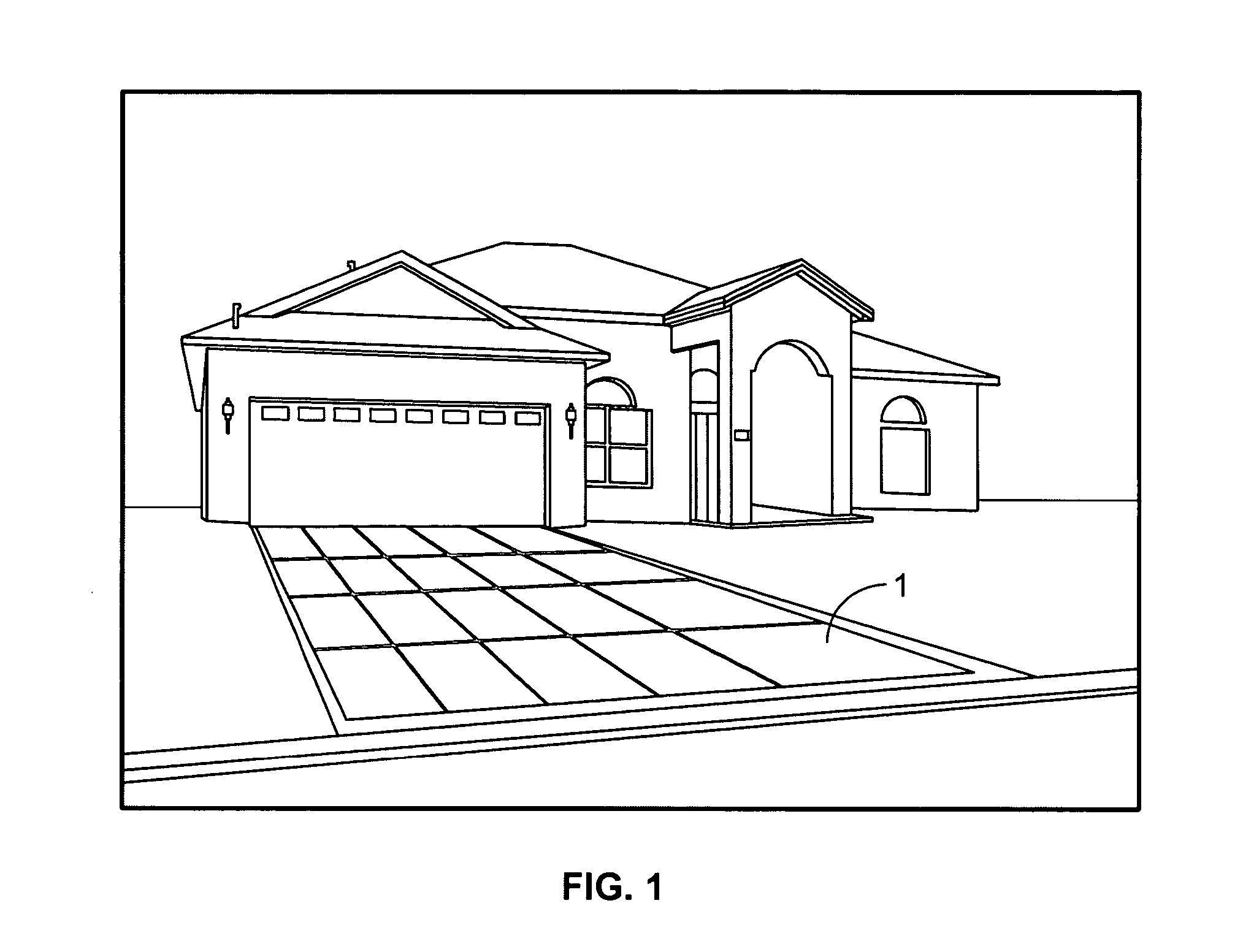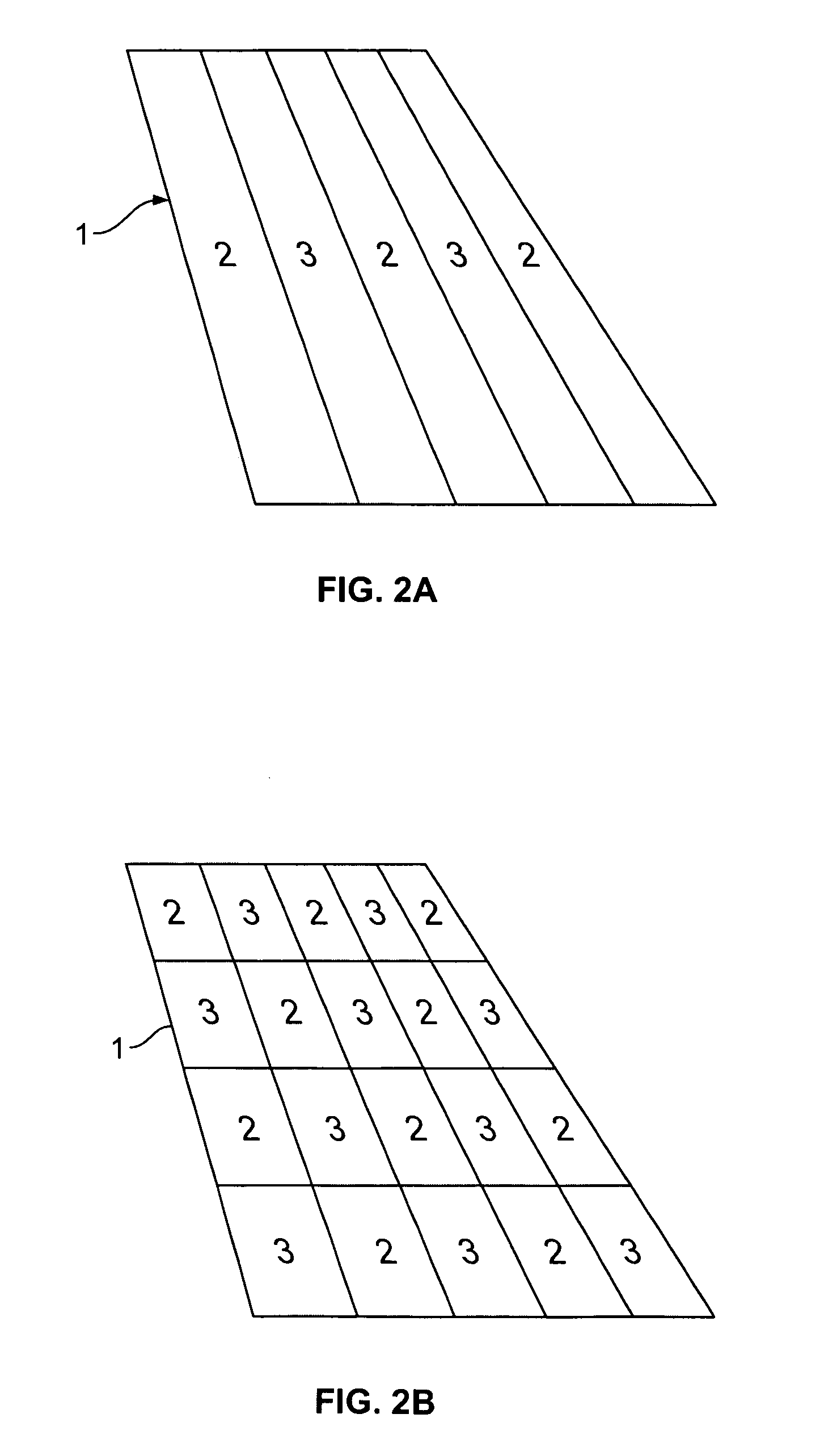Photovoltaic-embedded surface
a photovoltaic and surface technology, applied in the direction of pv power plants, sustainable buildings, light and heating equipment, etc., can solve the problems of large part of the overall system cost, the cost of individual mounting solar panels on roofs, and the high cost of photovoltaic systems
- Summary
- Abstract
- Description
- Claims
- Application Information
AI Technical Summary
Benefits of technology
Problems solved by technology
Method used
Image
Examples
Embodiment Construction
[0030] This invention contemplates the incorporation of photovoltaic materials into all paved trafficable surfaces, which refer to surfaces that are intended to carry pedestrian or vehicular traffic or that are potentially suitable for carrying pedestrian or vehicular traffic. Trafficable surfaces are those that can sustain loads perpendicular to the surface and have a coefficient of friction that is acceptable or similar to that normally used for surfaces that carry pedestrian or vehicular traffic, including but not limited to walkways, sidewalks, driveways, streets, highways, parking lots and runways, as well as basketball courts, tennis courts and urban baseball fields. Accordingly, discussions herein regarding the composition of the paved surfaces or of the photovoltaic-incorporated portions thereof are applicable to all paved surfaces, unless specifically stated otherwise. Thus, discussions herein shall generally refer to a “roadway” to generically designate these paved, traffi...
PUM
 Login to View More
Login to View More Abstract
Description
Claims
Application Information
 Login to View More
Login to View More - R&D
- Intellectual Property
- Life Sciences
- Materials
- Tech Scout
- Unparalleled Data Quality
- Higher Quality Content
- 60% Fewer Hallucinations
Browse by: Latest US Patents, China's latest patents, Technical Efficacy Thesaurus, Application Domain, Technology Topic, Popular Technical Reports.
© 2025 PatSnap. All rights reserved.Legal|Privacy policy|Modern Slavery Act Transparency Statement|Sitemap|About US| Contact US: help@patsnap.com



